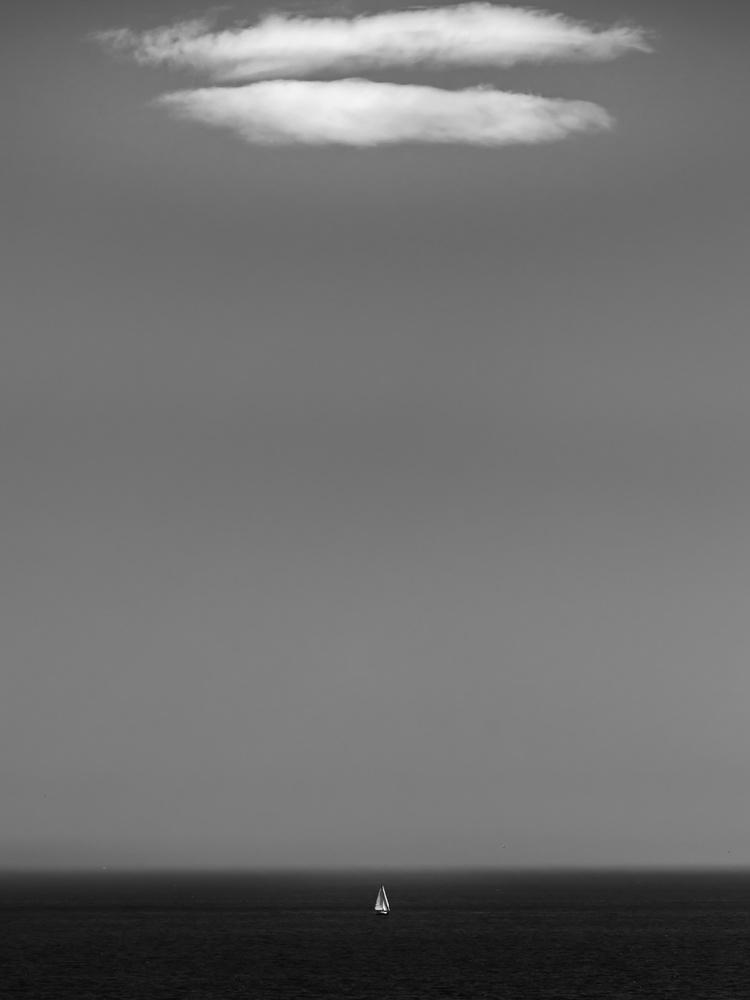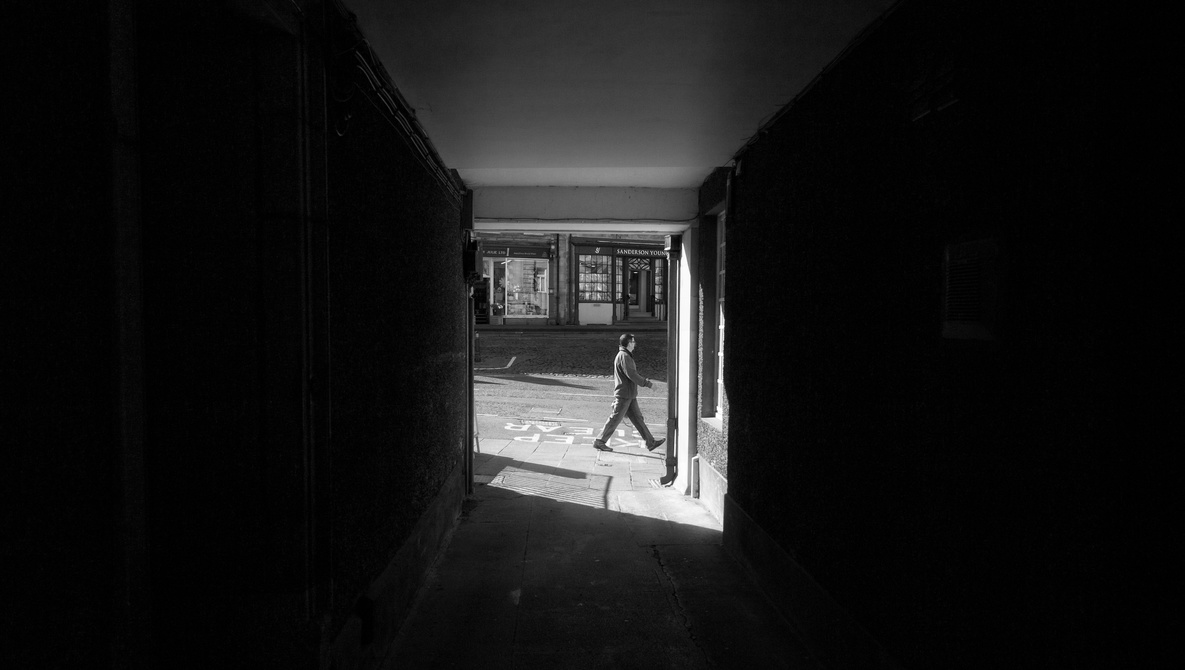Visual weight is an often overlooked but essential component of your photographs. It influences how your pictures are viewed and is what drives your compositions.
It is the force that draws your attention within an image but is often ignored by photographers. Every element in a photo has a different visual weight. Consequently, a picture’s various components work against each other. Each is vying for attention. In other words, we notice some things before others. It is why we compose shots in particular ways and decide what elements we include within the frame to ensure balance, flow, rhythm, and hierarchy. If we want compelling pictures, we can use our knowledge of visual weight to dictate how the viewer reads them.

It is unknown precisely why we perceive some elements as having more visual weight and attracting our attention more readily than others. Nevertheless, different factors vary in their power to catch the eye.
Color hues have different visual weights. Yellow is considered the lightest weight, and red is the heaviest. Orange, green, blue, and purple are between those in that order of increasing weight.
There’s more to it than the hue, though. Increased saturation also gives greater visual weight. So, if we place a boldly colored object amongst a paler background, then that bold object will exert a greater force, and our eyes gravitate toward it. Likewise, luminosity changes the visual weight too. Darker tones are heavier and exhibit more power to gain our attention.
Although we usually think of objects with more visual weight drawing our eye, this is not necessarily so. Contrast can come into play. A bright tone can stand out from a dark background, and that would be what we first notice.

Proportion affects visual weight too. Our mind believes that a large item has more weight than a smaller one. However, considering the previous factors, a larger, lightly toned object might carry less visual weight than a smaller dark one. Similarly, a group of compact objects has more weight than if the component parts were more widely dispersed, just as denser objects are heavier than loose, airy ones.
We often consider simplicity necessary in a photograph. Our eyes are drawn away from negative space toward elements with more complexity. Consequently, more complex areas of a picture have more visual weight. This is because the mind takes longer to process its information.
There is the visual weight that we apply because of our psychology too. We are drawn, possibly more strongly than any other factor, to people within an image. In portraits, it’s their eyes that attract us. Likewise, animals are more likely to attract our attention than inanimate objects.

As I mentioned earlier, visual weight is what we are considering when we are trying to balance a photo. Balance is achieved with equal weight on either side of an axis. In its simplest form, symmetry achieves this, with one side of an axis reflecting the other. If you recall the set of scales you used at primary school, a heavier weight nearer the fulcrum can be balanced by a lighter weight farther from it on the other side. Equally, different visual weights can be offset by their relative proximities to the axis.
An important thing to remember is that we don’t have to balance a photo with elements that are weighted in the same way. For example, a complex subject may balance a plain, dark red one, a single human might balance a multitude of birds, or a giant white hot air balloon might balance a small, dark basket hanging below it.
We are used to seeing the world around us affected by gravity. Heavier objects are on the ground while the brighter sky is above. In photography, there is a usual preference for the same. But a heavier object above moving into a lighter area below can also work.

Flow is the ease with which our eyes move around the photo. We use the visual weight of elements to dictate the order in which we view the image and where we pause.
We first see the essential information in a picture and then move on to other, lesser elements in order of importance. This is what is known as the hierarchy within the image.
 Rhythm is used a lot in photography. We look for repeating patterns of shapes, colors, textures, tones, and so forth. Sometimes we are satisfied by that. Then the pattern has equal weight across the image. However, we can also interrupt it. Consequently, that interruption has greater visual weight.
Rhythm is used a lot in photography. We look for repeating patterns of shapes, colors, textures, tones, and so forth. Sometimes we are satisfied by that. Then the pattern has equal weight across the image. However, we can also interrupt it. Consequently, that interruption has greater visual weight.
 This abstract idea of weight is not confined solely to vision. We think of leather as having a deep or heavy smell, while we consider lemon light. High musical notes are thought of as being lighter than deep ones. We know intuitively that the color red, the scent of soy sauce, the taste of Merlot, and the deep notes of a Beethoven symphony have something intangible in common.
This abstract idea of weight is not confined solely to vision. We think of leather as having a deep or heavy smell, while we consider lemon light. High musical notes are thought of as being lighter than deep ones. We know intuitively that the color red, the scent of soy sauce, the taste of Merlot, and the deep notes of a Beethoven symphony have something intangible in common.
 Additionally, emotions can vary from light, such as joy and surprise, to the heaviness of anger and depression.
Additionally, emotions can vary from light, such as joy and surprise, to the heaviness of anger and depression.
This concept of weight applied to different sensory experiences is not limited to English-speaking cultures. I’ve talked with friends with diverse first languages about it. Many but not all have similar abstract concepts. Sometimes they use a word that can be more closely translated as depth, strength, or intensity, but others didn't recognize the concept of sensory weight at all. Is visual weight part of the human psyche? Or is it cultural and linked to language? Some other aesthetic aspects of photography and art are cultural, so it will be interesting to explore this further.

Of course, this short article is just touching the surface of this fascinating topic. Furthermore, it is a lot to consider when shooting a photo. It is worth studying visual weight further and analyzing how the elements work within your own and others’ photographs. This trains your eye. Applying these techniques and taking advantage of visual weight will ultimately occur automatically.
It would be fantastic to hear your thoughts on this topic. Especially so if your native language isn’t English and you are from a completely different culture from mine. Does the weighting of different colors, smells, tastes, and sounds cohere with those described above? Or do you not have that concept at all.
Thank you for reading, and I look forward to you joining the discussion below.
If you enjoyed this, please read my previous related articles on emotion in photography and my exploration into what kind of photographer you are.







Thanks for another insightful article, Ivor!
In this photo, the moon is not the brightest part of the image, nor the most colorful, nor the most contrasty, nor the most detailed, nor the sharpest ... and yet it is what most people's eyes and attention are drawn to.
Why is that?
What "rule of weightiness" comes into play here that makes the moon steal the show?
I think that the moon draws our attention almost like a human face or a figure, or an animal. Sure, it's not alive, but it's shape is so different from all the other parts of a landscape, that it's definitely stands out.
That's smashing, Tom. I think it's the familiarity of the moon, the inherent fascination we have with it, plus, as Andrey says, the smooth, nearly round outline that contrasts with all the other shapes in the frame.
Thanks for the comment, Ivor. Your article has caused me to go back through a lot of my work to see what stands out and what doesn't, and then to ask myself "why?"
So much of the craft of photography is about getting the thing that we want to stand out to stand out, to readily catch the viewer's eye. Sure, there can sometimes be value in things being more subtle, and not catching the viewer's eye immediately, but in almost all scenarios the image is more effective (and more marketable) if it grabs the eye aggressively and immediately. That is what most advertisers and most publishers want. But of course it is not always a very creative approach. Different styles for different purposes.
Thanks, Ivor, this is a very interesting topic! It was really hard for me to understand and explain the direction of the flow in a photo, but now it became clearer. Answering your question - yes, I'm familiar somehow with the concept of visual weight, but previously I've known much less about it: dark objects, higher contract areas, human eyes/faces/figures, vibrant colors. The possible reason of why it hasn't some clear hierarchy is that it wasn't called "weight", but only something like "points of attraction".
I'm glad you found it interesting, Andrey. During my research for writing it, I found much more about this topic that I can include in this article. It's interesting studying photos and working out why our eyes move in particular ways around the shot, and why some "points of attraction" are more attractive than others. Thanks for the comment.